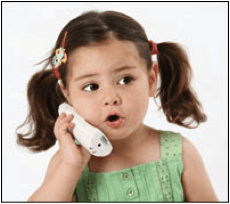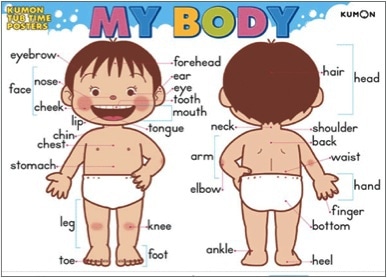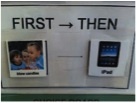Here is the next installment in a series focusing on language development in children ages 6 months to 3 years of age. In this third segment in the series, babies ages 19 to 24 months are addressed.
 Between the ages of 19 and 24 months, children, on average, are able to say fewer than 50 words. Their receptive language is better then expressive, and they may be able to string two words together. Receptive language refers to pointing or touching objects when another person says, “Where is the ball?” Expressive language would be the child saying, “ball,” when he sees a ball.
Between the ages of 19 and 24 months, children, on average, are able to say fewer than 50 words. Their receptive language is better then expressive, and they may be able to string two words together. Receptive language refers to pointing or touching objects when another person says, “Where is the ball?” Expressive language would be the child saying, “ball,” when he sees a ball.
Signs of delay in a child ages 19 to 24 months are:
- Does not point to body parts by 24 months, i.e. “Touch your nose”
- Does not follow simple one-step instructions, i.e. “Pick up spoon”
- Does not vocally imitate, i.e. “Say ‘mama’ ”
If your child is showing signs of any of these delays, there are various ways you can work with your child to help him/her increase these developmental language skills.
To help your child learn to point to his own body parts you can play the following game with him:
- Do one body part at a time
- Say the direction: “Touch your nose.”
- If child doesn’t respond within two seconds, physically prompt by taking his hand and helping him touch his nose. Then say, “That’s your nose!” Then ask the same question again “Touch your nose.” If he does not touch it independently, help his hand again right away. When you ask the next time, try and physically help him a little less so he can do more independently – like put your hand on his arm instead of “hand over hand” prompting.
- Give a reinforcer, such as a favorite toy or a little edible treat, immediately after he touches his nose on his own. Pair the reinforcer with specific verbal praise, “Wonderful touching your nose.”
- Make sure to generalize across people – have Dad ask him to touch his nose, Grandma, big sister, Mom, etc.
- After he has learned to consistently touch his nose independently, then teach him to expressively say “nose.” Touch his nose, or your nose, and say, “What is this?” Again, verbally prompt “nose” if he does not respond within a few seconds. Again, provide a reinforcer, such as a favorite toy or a little edible treat, when he independently says, “nose.” Again, pair the reinforcer with specific verbal praise, “Great job saying ‘nose’.”
To help your child master single step instructions you can try the following:

- Play the “come here” game with two adults and a highly motivating reinforcer. This works well, for example, if one adult has a puzzle and the other adult has all the pieces. The adult holding the pieces says, “come here.” When the child comes, give her one piece. Then the adult holding the board says, “come here.” When the child comes, she gets to put the puzzle piece in the board.
- Have child “pick up” or “bring you” an object she loves. She will be motivated to get it.
- Give small simple directions and physically prompt within two seconds if the child does not respond. Following through is key, even at an early age, to teach kids what words mean. If she doesn’t understand what “pick up” means – physically modeling that action right after you say it will teach her – “This is what ‘pick up’ means.”
- Make visual picture of what child needs to do.
Finally, to help work on vocal imitation: Use highly motivating games or food that your child will want to ask for.
- Start with single phonemes. Only model for her to say the initial sound of the item – then give her the item
- Then blend consonant-vowel: First two sounds of the item, then add consonant-vowel-consonant, approximately whole word label for item
Stay tuned for the next and final segment in this series on language development. The child ages 25 to 36 months will be addresses as well as a summary of all the recommendations given in this series on increasing language in babies and young children.
